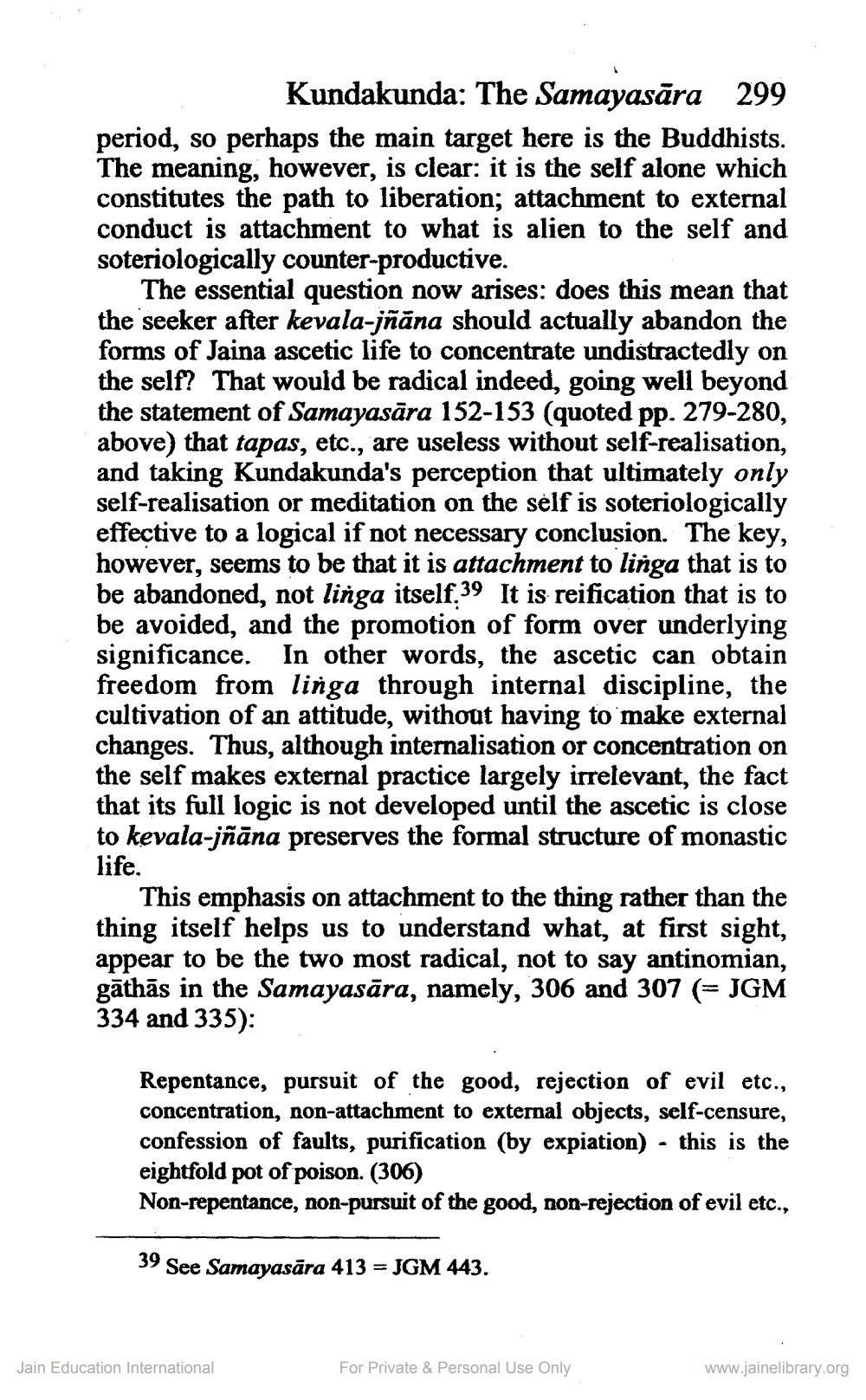________________
Kundakunda: The Samayasāra 299 period, so perhaps the main target here is the Buddhists. The meaning, however, is clear: it is the self alone which constitutes the path to liberation; attachment to external conduct is attachment to what is alien to the self and soteriologically counter-productive.
The essential question now arises: does this mean that the seeker after kevala-jñāna should actually abandon the forms of Jaina ascetic life to concentrate undistractedly on the self? That would be radical indeed, going well beyond the statement of Samayasāra 152-153 (quoted pp. 279-280, above) that tapas, etc., are useless without self-realisation, and taking Kundakunda's perception that ultimately only self-realisation or meditation on the self is soteriologically effective to a logical if not necessary conclusion. The key, however, seems to be that it is attachment to linga that is to be abandoned, not linga itself.39 It is reification that is to be avoided, and the promotion of form over underlying significance. In other words, the ascetic can obtain freedom from linga through internal discipline, the cultivation of an attitude, without having to make external changes. Thus, although internalisation or concentration on the self makes external practice largely irrelevant, the fact that its full logic is not developed until the ascetic is close to kevala-jñāna preserves the formal structure of monastic life.
This emphasis on attachment to the thing rather than the thing itself helps us to understand what, at first sight, appear to be the two most radical, not to say antinomian, gāthās in the Samayasāra, namely, 306 and 307 (= JGM 334 and 335):
Repentance, pursuit of the good, rejection of evil etc., concentration, non-attachment to external objects, self-censure, confession of faults, purification (by expiation) - this is the eightfold pot of poison. (306) Non-repentance, non-pursuit of the good, non-rejection of evil etc.,
39 See Samayasāra 413 = JGM 443.
Jain Education International
For Private & Personal Use Only
www.jainelibrary.org




